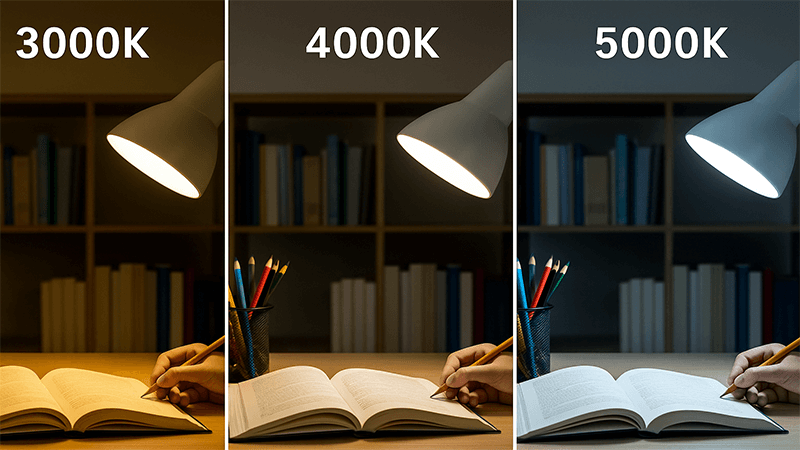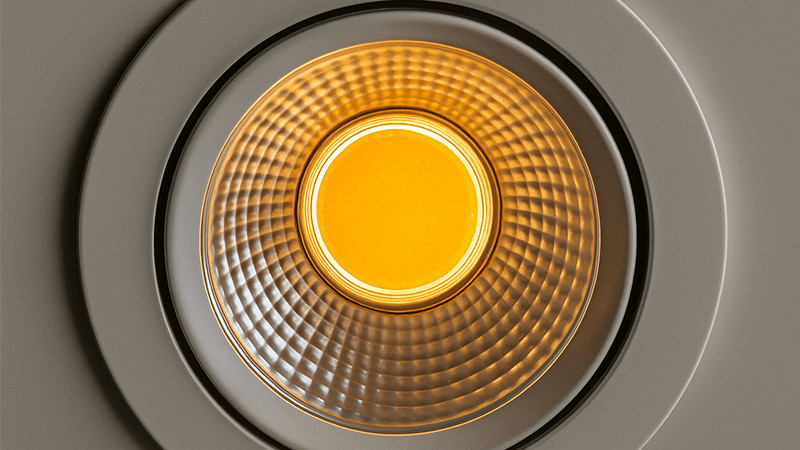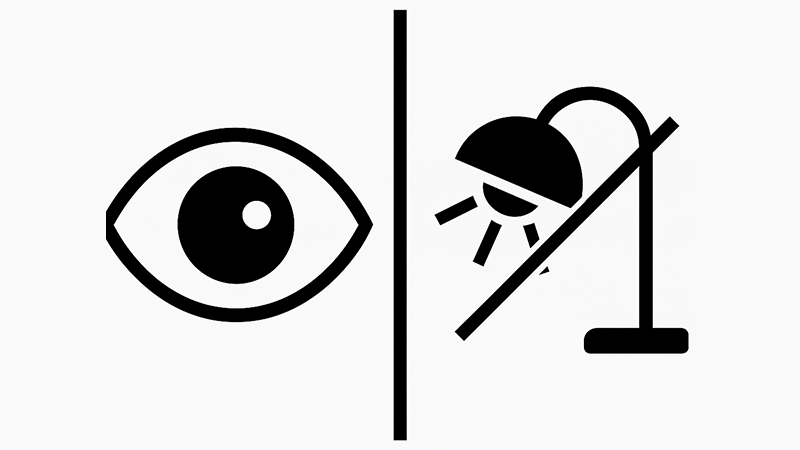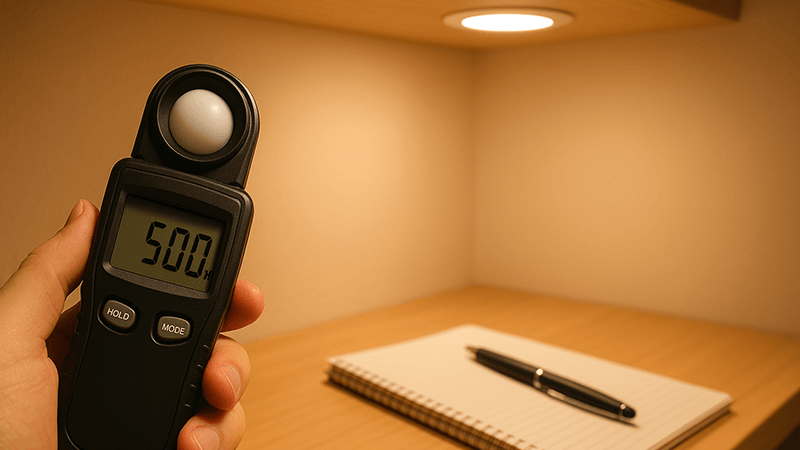Finding the right light for study spaces is challenging. Poor lighting causes eye strain and high energy costs. COB LED downlights solve this with focused, efficient, and comfortable illumination.
COB (Chip on Board) LED downlights are a top choice because they provide high-quality, focused light with excellent color rendering. They are energy-efficient, long-lasting, and designed for low glare (low UGR), creating a comfortable environment perfect for long periods of reading and studying.

I've seen many clients transform their educational spaces with the right lighting. It's not just about brightness; it's about creating the perfect atmosphere for learning. But getting it right involves more than just picking a fixture. To help, I want to answer the key questions I often get from purchasing managers. Let's break it down so you can make the best decision for your projects.
What LED light color is best for studying?
Choosing the wrong light color can make students feel sleepy or anxious. This hurts focus and productivity, defeating the purpose of a dedicated study space. Selecting the right color temperature1 is the solution.
The best LED light color for studying is typically between 4000K and 5000K. This range, known as neutral or cool white, mimics natural daylight. It helps increase alertness and concentration without being too harsh, making it ideal for focus-intensive tasks.

Deeper Dive: Matching Color Temperature to a Space
When we talk about light color, we are talking about Correlated Color Temperature (CCT)2, which is measured in Kelvin (K). It’s a simple scale: lower Kelvin numbers mean warmer, more yellow light, while higher numbers mean cooler, bluer light. For an environment like a university, you don't want a one-size-fits-all solution. You need different CCTs for different areas to create the right mood and function.
I remember a project for a new university library. The project manager initially wanted to use 3000K lighting everywhere for a "warm and cozy" feel. I explained that while this is great for relaxation areas, it's not ideal for the main study halls3. Warm light can actually make people feel relaxed and even sleepy. We decided on a more strategic approach. We used 4000K COB downlights in the main study halls and reading areas4. This neutral white light is excellent for focus and concentration. Then, we used 3000K downlights in the student lounges and break areas to create that comfortable, relaxing atmosphere they wanted. The feedback was fantastic. Students felt more alert in the study zones and more relaxed in the break areas.
Here is a simple breakdown I use with my clients:
| Color Temperature (CCT) | Name | Best For | Psychological Effect |
|---|---|---|---|
| 2700K - 3000K | Warm White | Lounges, break rooms, dormitory social areas | Relaxing, cozy, inviting |
| 4000K | Neutral White | Libraries, classrooms, main study halls | Focused, alert, balanced, mimics daylight |
| 5000K - 6000K | Cool White | Laboratories, art studios, technical design areas | High alertness, crisp, good for detail work |
As a purchasing manager, offering this level of customization shows a deep understanding of the client's needs. Quality COB LEDs can be manufactured to precise CCTs, giving you the flexibility to build the perfect lighting scheme for any educational project.
What's the best LED light for studying?
With so many LED options available, it's hard to know which type is truly best for studying. Picking the wrong one can mean wasted investment, poor performance, and unhappy students and staff.
The best LED light for studying provides focused, high-quality light with minimal glare. COB LED downlights excel here. They produce a single, uniform beam of light that is easy to direct, making them perfect for illuminating desks and reading areas without distracting light spill.

Deeper Dive: COB vs. SMD for Study Environments
The two main types of LEDs you'll encounter are COB (Chip on Board) and SMD (Surface Mounted Device). Understanding the difference is key to choosing the right light for a study space. An SMD fixture uses many small, individual LEDs spread across a board. This creates a wide, dispersed light. It's good for general room lighting, like in a hallway.
A COB LED, on the other hand, packs many LED chips into a very small area, creating a single, powerful point of light. Think of it as the difference between a floodlight (SMD) and a spotlight (COB). For studying, you need a spotlight. You want the light focused on the book or laptop, not scattered around the room or shining in someone else's eyes.
In my factory, we design our COB downlights with deep-set reflectors and specialized lenses. This design gives us incredible control over the beam of light. We can create a narrow beam of 24 degrees to perfectly light up a single study carrel or a wider 60-degree beam for a group study table. This precision prevents light from spilling into adjacent areas, which is a common source of distraction in quiet libraries.
Let’s compare them head-to-head for a study application:
| Feature | COB (Chip on Board) LED | SMD (Surface Mounted Device) LED |
|---|---|---|
| Light Quality | Single, uniform light source; no multiple shadows | Multiple light points; can create multiple shadows |
| Beam Control | Excellent; easily focused with reflectors and lenses | Poor; light is diffused and hard to control |
| Best Use Case | Task lighting (desks), accent lighting, high ceilings | General ambient lighting5, large area illumination |
| Visual Comfort | High comfort when paired with a good anti-glare design | Can cause glare if individual LED points are visible |
For a purchasing manager like Shaz, specifying COB downlights for study areas ensures that the final installation delivers the performance needed for a serious learning environment. It’s a technical choice that has a huge impact on the user’s experience.
Which light is good for eyes during study?
Staring at books or screens under bad lighting causes headaches, dry eyes, and serious eye strain6. This makes studying painful and unproductive, and it can harm vision over the long term.
A light that is good for the eyes has a low Unified Glare Rating (UGR), ideally under 16 for study tasks, and a high Color Rendering Index (CRI)7, over 90. It must also be flicker-free. COB LED downlights with good design meet these criteria, protecting eyes from strain.

Deeper Dive: The Three Keys to Eye Comfort
When clients ask me for an "eye-friendly" light, I tell them to focus on three critical factors: glare, color rendering, and flicker. In my experience, if you get these three things right, you will create a comfortable and healthy visual environment.
1. UGR (Unified Glare Rating)8
Glare is the number one enemy of visual comfort. UGR is a scale that measures the level of discomfort glare from light fixtures. The lower the number, the better. For general offices, a UGR of less than 19 is the standard. However, for tasks that require intense focus for long periods, like reading and technical work, I always recommend a UGR of 16 or less (UGR≤16). This is a very important detail. Many cheap downlights have a UGR of 22 or even 25, which is simply not suitable for a library. We achieve this low UGR in our COB downlights by setting the light source deep inside the fixture and using special black or honeycomb reflectors that trap stray light.
2. CRI (Color Rendering Index)
CRI measures how accurately a light source shows the true colors of objects, on a scale of 0 to 100. Natural sunlight is 100. For a library, you need high CRI so that the colors in textbooks, diagrams, and images look correct. A low CRI (below 80) can make colors look washed out and dull, which forces the eyes to work harder to distinguish details. All our COB downlights for educational projects have a CRI above 90 (CRI>90). This ensures that visual information is clear and easy to process, reducing mental fatigue.
3. Flicker
Flicker is a rapid, often invisible, fluctuation in light output. It's usually caused by a low-quality power supply, or driver. Even if you can't see it, your brain and eyes can detect it, leading to headaches, migraines, and eye strain. I once visited a client's newly renovated office where staff complained of constant headaches. The lighting looked fine, but a quick check with my flicker meter revealed a serious problem. We replaced their lights with our flicker-free COB downlights, and the complaints stopped completely. For students spending hours under these lights, providing a stable, flicker-free light source is not a luxury; it is a necessity.
What is the best light brightness for studying?
Too much light is just as bad as too little. An overly bright space causes glare and headaches, while a dim space causes eye strain. Getting the brightness wrong makes a study space uncomfortable and ineffective.
The best brightness for studying is around 500 lux on the task surface (the desk or book). This provides clear light for reading without being overpowering. For surrounding ambient light, a lower level of about 300 lux is sufficient.

Deeper Dive: Using Lux to Plan Your Lighting
It's important to understand the difference between lumens and lux. Lumens measure the total amount of light a bulb produces. Lux measures the amount of light that actually falls on a surface. Lux is what truly matters for the user. A 1000-lumen downlight can produce very different lux levels9 depending on the ceiling height and the beam angle.
The right lux level depends on the specific area within the library or university. You don't need the same brightness everywhere. A professional lighting plan will specify different lux levels for different zones to maximize comfort and energy efficiency. Based on my experience and industry standards, here are the targets I recommend for educational projects10:
| Area | Recommended Lux Level (on the surface) | Purpose |
|---|---|---|
| Study Desks / Carrels | 500 lux | Provides clear, strong light for reading and writing without strain. |
| Bookshelves / Stacks | 200 - 300 lux | Allows users to easily read book spines and navigate the aisles. |
| Circulation / Hallways | 150 lux | Ensures safe movement and orientation. |
| Lounge / Break Areas | 150 - 200 lux | Creates a more relaxed, less intense environment than study zones. |
How do we achieve these precise levels? It's a combination of the lumen output of the COB downlight, its beam angle, and the spacing between each fixture. This is where working with an experienced manufacturer pays off. We can run lighting simulation11 reports (using software like DIALux) to create a perfect lighting plan before a single fixture is ordered.
Furthermore, I always recommend using dimmable COB downlights12. This gives the end-user control. A student might want 500 lux for reading a dense textbook but prefer 350 lux for working on a laptop. Dimmability provides this flexibility. It also allows the facility to save significant energy by dimming lights during daytime hours or in less-used areas. For a purchasing manager, including dimmable drivers (like 0-10V or DALI systems) in your proposal adds huge value and makes the space future-proof.
Conclusion
In summary, COB LED downlights13 are ideal for universities. They offer the right color, control, eye comfort, and brightness needed for effective studying, making them a smart, long-term investment.
Learn about the ideal color temperature range that boosts focus and productivity for students. ↩
Understand how CCT affects lighting choices and the atmosphere in educational spaces. ↩
Learn about the best lighting strategies to create conducive study hall environments. ↩
Find out the ideal lighting solutions that enhance reading comfort and focus. ↩
Understand the importance of ambient lighting in creating a balanced study atmosphere. ↩
Understand the factors contributing to eye strain and how proper lighting can help. ↩
Find out how CRI impacts visual clarity and comfort in study areas. ↩
Discover the significance of UGR in creating comfortable and effective study environments. ↩
Explore the optimal lux levels for different study environments to enhance learning. ↩
Discover best practices that ensure effective lighting in various educational settings. ↩
Explore how lighting simulation tools can optimize lighting plans for better outcomes. ↩
Discover how dimmable options provide flexibility and energy savings in study spaces. ↩
Explore how COB LED downlights enhance study environments with focused, efficient lighting. ↩

